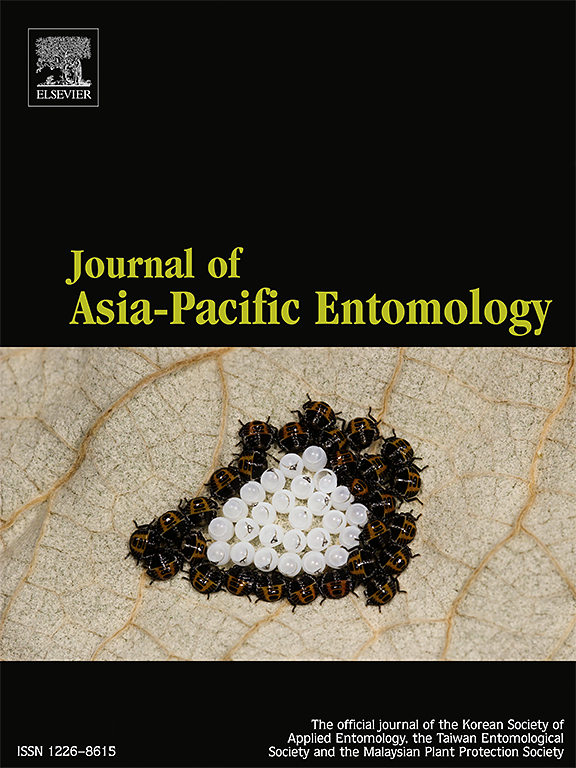Prosolierius qizhihaoi sp. nov., a new species of solieriine rove beetles from mid-Cretaceous Kachin amber (Coleoptera: Staphylinidae)
IF 1.3
3区 农林科学
Q3 ENTOMOLOGY
引用次数: 0
Abstract
The rove beetle subfamily Solieriinae represents a small and phylogenetically distinct lineage, currently comprising only a single extant genus, Solierius Bernhauer, which is endemic to South America. The fossil record of this subfamily includes five extinct species assigned to the extinct genus Prosolierius, discovered in Barremian-Cenomanian amber deposits from Lebanon, Spain, and northern Myanmar. Here we describe a new species of Solieriinae, Prosolierius qizhihaoi sp. nov., based on an exceptionally well-preserved specimen from the mid-Cretaceous Kachin amber. This new species exhibits close morphological similarities to Prosolierius thayerae Yamamoto, particularly in the elongation of antennomere 11 and the narrow genital segments. However, P. qizhihaoi can be distinguished by its elongate and slender antennomere 3, as well as the distinctly oval-shaped antennomere 4. The discovery of these fossil species within Prosolierius highlights the previously unrecognized palaeodiversity of Solieriinae rove beetles during the late Mesozoic, providing new insights into the evolutionary history of this enigmatic subfamily.
LSID code: www.zoobank.org/urn:lsid:zoobank.org:act:F1C95B5A-BD6D-4F84-9B03-8DD25CDFBAE2

中白垩世克钦琥珀棘孔虫一新种(鞘翅目:棘孔虫科)
飞虫亚科代表了一个小的和系统发育上不同的谱系,目前只包括一个现存的属,飞虫属Bernhauer,它是南美洲特有的。该亚科的化石记录包括5个已灭绝的物种,它们被归为已灭绝的Prosolierius属,发现于黎巴嫩、西班牙和缅甸北部的Barremian-Cenomanian琥珀矿床。在此,我们描述了一个新物种,即Prosolierius qiizhihaoi sp. nov.,它来自于一个保存非常完好的中白垩世克钦琥珀标本。该新种在形态上与山本原梭菌(Prosolierius thayerae Yamamoto)非常相似,特别是触角膜11的伸长和生殖节的狭窄。然而,P. qiizhihaoi可以通过其细长的天线膜3和明显的椭圆形天线膜4来区分。这些化石物种的发现突出了以前未被认识的中生代晚期soliiinae rove甲虫的古多样性,为这个神秘亚科的进化史提供了新的见解。LSID代码:www.zoobank.org/urn:lsid:zoobank.org:act:F1C95B5A-BD6D-4F84-9B03-8DD25CDFBAE2
本文章由计算机程序翻译,如有差异,请以英文原文为准。
求助全文
约1分钟内获得全文
求助全文
来源期刊

Journal of Asia-pacific Entomology
Agricultural and Biological Sciences-Insect Science
CiteScore
2.70
自引率
6.70%
发文量
152
审稿时长
69 days
期刊介绍:
The journal publishes original research papers, review articles and short communications in the basic and applied area concerning insects, mites or other arthropods and nematodes of economic importance in agriculture, forestry, industry, human and animal health, and natural resource and environment management, and is the official journal of the Korean Society of Applied Entomology and the Taiwan Entomological Society.
 求助内容:
求助内容: 应助结果提醒方式:
应助结果提醒方式:


